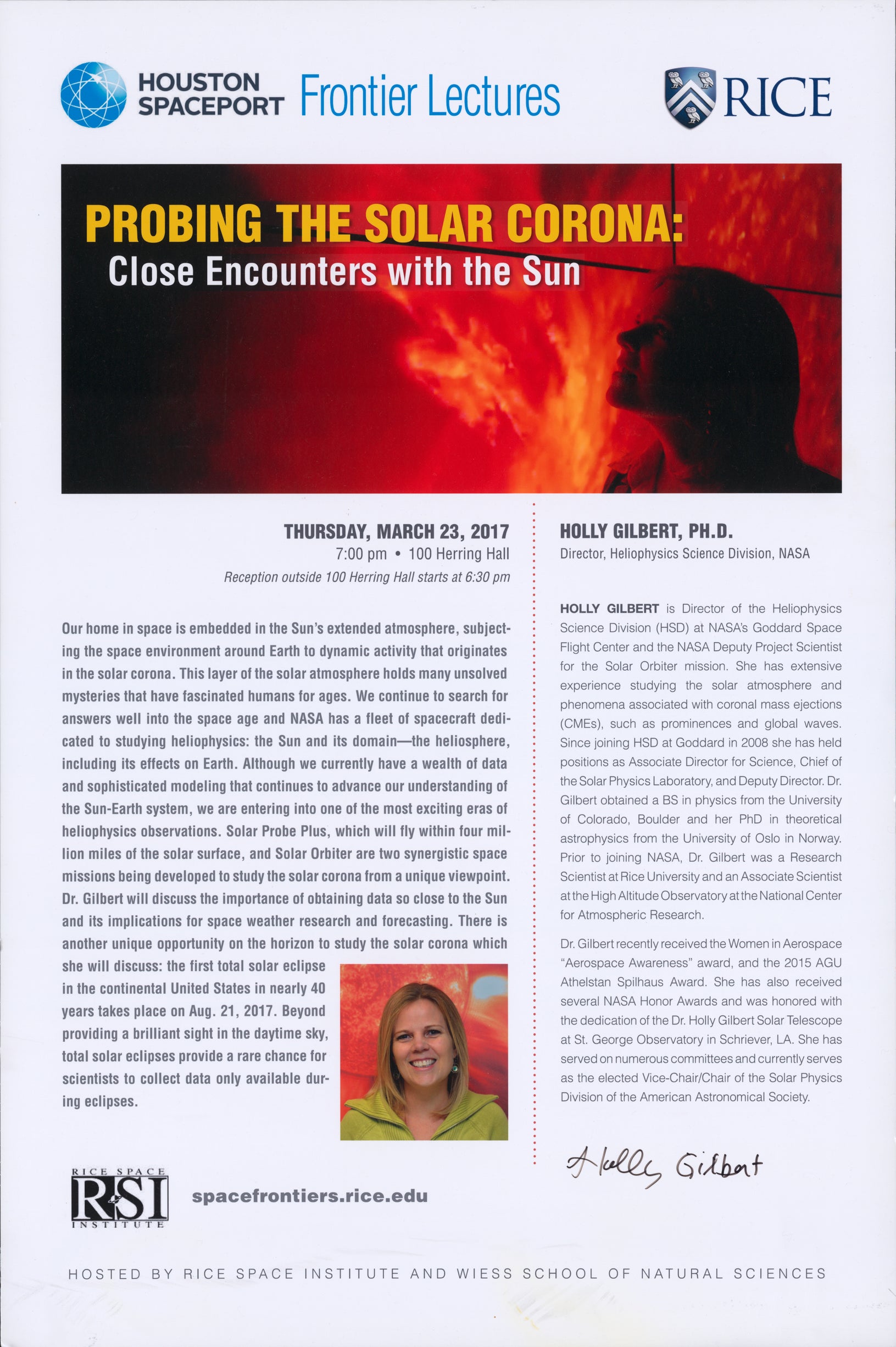Probing the Solar Corona: Close Encounters with the Sun - Holly Gilbert
Our home in space is embedded in the Sun’s extended atmosphere, subjecting the space environment around Earth to dynamic activity that originates in the solar corona. This layer of the solar atmosphere holds many unsolved mysteries that have fascinated humans for ages. We continue to search for answers well into the space age and NASA has a fleet of spacecraft dedicated to studying heliophysics: the Sun and its domain—the heliosphere, including its effects on Earth. Although we currently have a wealth of data and sophisticated modeling that continues to advance our understanding of the Sun-Earth system, we are entering into one of the most exciting eras of heliophysics observations. Solar Probe Plus, which will fly within four million miles of the solar surface, and Solar Orbiter are two synergistic space missions being developed to study the solar corona from a unique viewpoint. Dr. Gilbert will discuss the importance of obtaining data so close to the Sun and its implications for space weather research and forecasting. There is another unique opportunity on the horizon to study the solar corona which she will discuss: the first total solar eclipse in the continental United States in nearly 40 years takes place on Aug. 21, 2017. Beyond providing a brilliant sight in the daytime sky, total solar eclipses provide a rare chance for scientists to collect data only available during eclipses.
Poster

